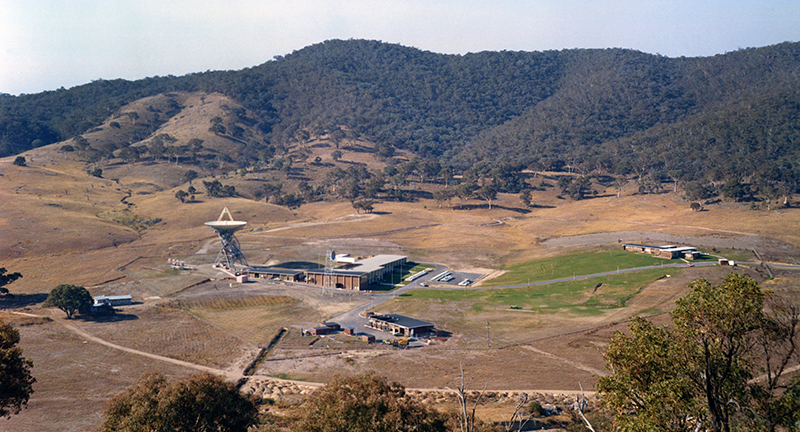CDSCC's involvement in the Apollo program

When it opened in March 1965, the Tidbinbilla Deep Space Instrumentation Facility 42 (DSIF42), now known as the Canberra Deep Space Communication Complex was built specifically to support interplanetary spacecraft exploring the Solar System.
It had already received the first close up images of the planet Mars in July 1965 and was supporting several other robotic spacecraft on lunar and planetary science missions.
To provide support during the Apollo missions and human spaceflight, a special ‘wing section’ was added to the site as part of what was then known as NASA’s Manned Space Flight Network.
The new control room ‘wing’ was also a backup to the nearby Honeysuckle Creek Tracking Station.
The original 26 metre antenna located here supported telemetry and voice communications throughout the Apollo lunar missions - 8, 10, 11-17 from December 1968 to December 1972.
For Apollo 11, DSIF42 was to have been the prime antenna to support the astronauts in the Lunar Module, but a small electrical fire in the antenna power system a few days before the landing meant that this task was given to Honeysuckle Creek.
After quick repairs, DSIF42 was given responsibility for the telemetry with the Command Module in lunar orbit and the biomedical and voice communications with astronaut Michael Collins.

By the end of 1969, construction had begun on a new larger antenna dish - Deep Space Station 43 (DSS-43).
Originally constructed as a 64 metre diameter dish it was designed to support missions to the Moon and beyond to the outer planets. Its larger surface area meant that it had a greater overall sensitivity to the weak radio signals being transmitted by spacecraft at these enormous distances.
It was scheduled to enter service in early 1973, but was ready to support communications by the end of the previous year. To test the new antenna’s systems, it was decided to use it, on an ‘as needed’ basis, to support the final mission of the lunar program - Apollo 17 in December 1972.
On the 15th December 1972, astronaut Gene Cernan took the last steps on the surface of the Moon as part of the Apollo program, and said: “And, as we leave the Moon at Taurus–Littrow, we leave as we came and, God willing, as we shall return, with peace and hope for all mankind.”

Since the end of the Apollo program, the Canberra Deep Space Communication Complex has continued to grow with four new antennas being added, as well as new technologies and capabilities to support dozens of spacecraft exploring the Solar System and beyond.
The original Honeysuckle Creek antenna was moved here after that station’s closure in 1981. It was renamed as Deep Space Station 46 and operated here for many years, until it was finally retired in early 2010.
The big dish, DSS-43 was expanded to a 70 metre antenna in the late 1980s and has had many upgrades over the decades. In 2020, it will again be getting some significant improvements with the addition of two new transmitters.
These latest upgrades will prepare this antenna for future missions, including the first human missions to the planet Mars which may occur sometime in the late 2030s.
In the meantime, there are plans underway for a return to the Moon by the United States in the mid-2020s, and once again, Tidbinbilla will play a role as humanity once more steps onto the dusty, cratered surface of our celestial neighbour.